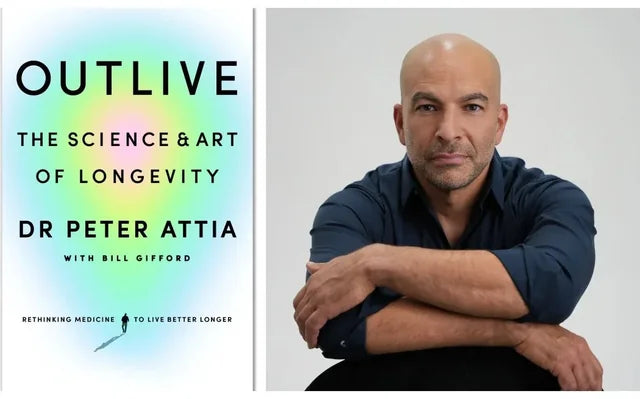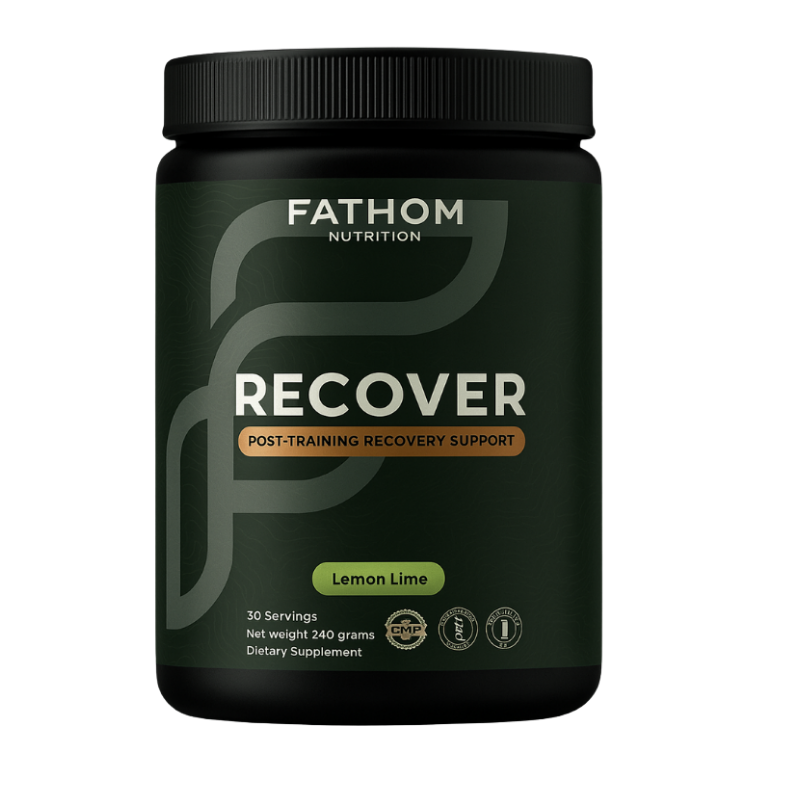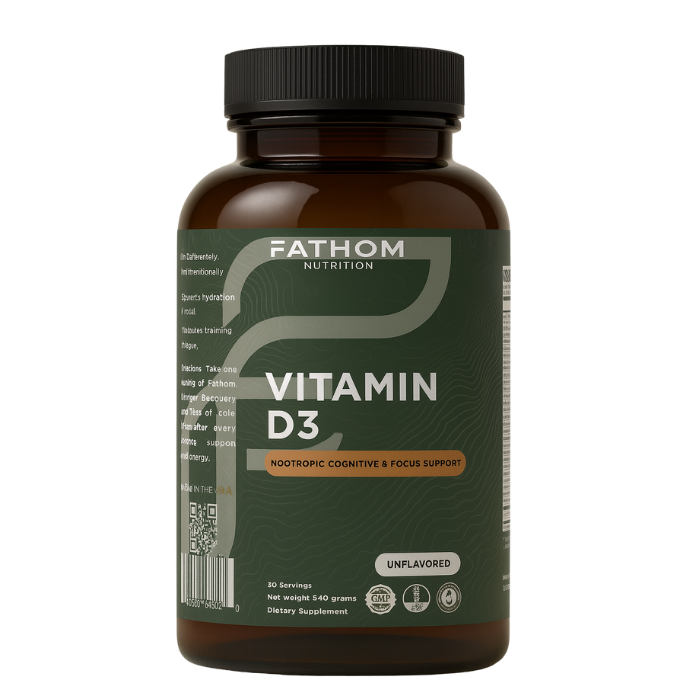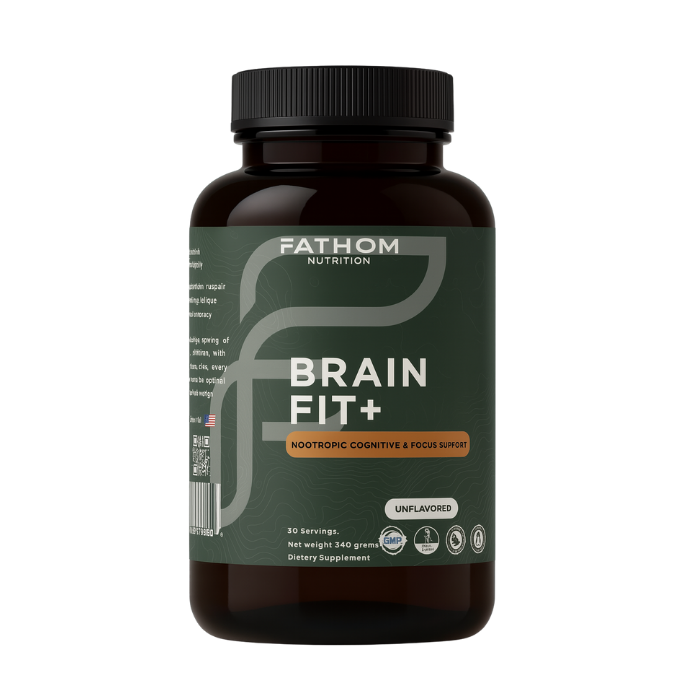Outlive by Dr. Peter Attia: A Deep Review and Reflection on the Future of Longevity, Performance, and Precision Health

Few books in the past decade have made as much noise in both clinical and consumer health circles as Dr. Peter Attia’s Outlive: The Science and Art of Longevity. It's not a wellness book in the casual sense. It’s a systems-level reframing of how we think about health, disease prevention, and lifespan—not only in years, but in quality of years.
As someone grounded in performance physiology, nutritional biochemistry, and applied kinesiology, I approached this book not as a casual reader but as a practitioner. I wanted to see how Dr. Attia translated decades of scientific literature, clinical experience, and personal transformation into a readable framework for the high-functioning, long-living human.
What I found was a synthesis of the best in medicine, exercise science, and behavioral psychology—an operating manual not just for adding years to life, but for adding life to years.
In this review, I’ll walk through the book’s core framework, reflect on the implications for performance and recovery, and distill a few advanced insights that are especially relevant for athletes, professionals, and anyone thinking about long-range health with scientific precision. This isn’t a summary—it’s a deep dive. Because Outlive deserves one.
The Core Shift: From Medicine 2.0 to Medicine 3.0
Dr. Attia opens with a sharp critique of what he calls “Medicine 2.0”—our reactive, disease-centric medical model. The system, he argues, is excellent at acute care but fails catastrophically at prevention, especially when it comes to the chronic diseases that ultimately shorten lifespan and healthspan: atherosclerosis, cancer, neurodegeneration, and metabolic dysfunction.
What he proposes instead is “Medicine 3.0”—a proactive, data-driven, systems-level approach to optimizing human function before decline begins. This is where the book stands apart. Attia isn’t interested in biohacking or wellness fads. He wants a comprehensive framework for preventing the most predictable causes of age-related decline, with early intervention and personalization at the center.
This shift matters. It aligns exactly with the model we use at Fathom Nutrition: one that respects both data and context, focusing on behavior, biomarkers, and long-term outcomes rather than temporary fixes.
The Four Horsemen: What Actually Kills Us
One of the most useful organizing concepts in Outlive is the framing of chronic disease through what Attia calls the “Four Horsemen”:
-
Cardiovascular disease
-
Cancer
-
Neurodegenerative disease
-
Type 2 diabetes (and related metabolic dysfunction)
Rather than treating these as siloed conditions, Attia walks through their shared underlying mechanisms—primarily insulin resistance, chronic inflammation, oxidative stress, and mitochondrial decline.
What’s powerful here is how he maps prevention not to symptom management, but to early pattern recognition. He advocates for monitoring lab values long before they cross into pathology. Think of ApoB instead of just LDL. LP-IR instead of just fasting glucose. CGMs for glycemic variability, not just A1c.
This is advanced longevity science grounded in clinical pragmatism. It’s not just about “eating clean” or “working out more.” It’s about knowing what data matters, and why.
Exercise: The Most Powerful Drug We Never Prescribe Properly
If Outlive has a central intervention strategy, it’s exercise. But not in the casual sense.
Dr. Attia is clear: exercise is the most potent, broadly effective tool we have to slow or reverse nearly every mechanism of biological aging. And yet, most people are doing it wrong—if they’re doing it at all.
The exercise section of Outlive is, in my view, the most valuable part of the book for those serious about long-term function. Attia breaks training into four core domains:
-
Zone 2 aerobic work: foundational for mitochondrial health and metabolic efficiency
-
VO2 max training: a ceiling effect—high VO2 max is a strong predictor of longevity
-
Strength training: particularly focused on muscle mass preservation and grip strength as mortality indicators
-
Stability and neuromotor training: especially for fall prevention and maintaining CNS-muscle integration
From a kinesiology and sports science lens, this structure is almost perfect. It respects periodization. It honors specific adaptations to imposed demands (SAID). And it bridges performance with orthopedic durability—which, by the way, matters more than most people realize after age 50.
It also reinforces the idea that cardiorespiratory fitness (CRF) is the single strongest predictor of all-cause mortality—something underappreciated outside elite coaching circles.
For those building or evaluating their own training systems, this is a reminder: your aerobic base is not optional. Your grip strength is not cosmetic. And your movement patterns are predictive, not just performative.
Nutrition: Less Dogma, More Metabolic Honesty
In a world dominated by polarized diet tribes, Attia takes a refreshingly pragmatic stance. He doesn’t evangelize for keto, vegan, or carnivore diets. Instead, he comes back to metabolic flexibility and insulin sensitivity as the north stars.
What matters most is the individual’s ability to maintain low glycemic variability, manage appetite signaling, and preserve lean mass while minimizing visceral fat. The tools for achieving that can vary by person, and Attia acknowledges that.
From a regulatory standpoint, this is important. There are no medical claims about diet curing disease here. Instead, we see a data-backed emphasis on protein intake, timing, and the need to underrate calories only when appropriate—especially in those seeking longevity, not just aesthetics.
The protein guidelines are especially relevant for readers of this blog. Attia recommends 1.6 to 2.2 grams of protein per kilogram of bodyweight, aligning with current literature on muscle protein synthesis and sarcopenia prevention.
He also gets granular on fasting, noting its utility in insulin-resistant or prediabetic individuals but cautioning against overuse in lean or high-output athletes. The nuance is welcome—and increasingly rare.
Sleep and Emotional Health: The Silent Pillars
Later chapters explore sleep and emotional regulation as part of the longevity equation. While these sections are less technically dense, they are critical.
Attia speaks candidly about his own struggles with emotional health and how unresolved trauma and chronic stress can override even the most optimized physical systems. He integrates findings from neuroscience, behavioral therapy, and sleep science to show that nervous system regulation is not a soft skill—it’s a survival skill.
That idea has major implications for training, recovery, and even nutrition. If sympathetic tone remains elevated overnight, deep sleep declines, HRV drops, and metabolic health deteriorates over time—even if the macros and macros are dialed in.
He encourages readers to take sleep seriously as a recovery modality and to address emotional health with the same diligence applied to blood work or macros. For many high performers, that’s the missing link.
What Outlive Gets Right
There are a few standout qualities that make Outlive worth reading, especially for those in the performance, nutrition, or medical space:
-
Systems thinking: Attia connects disciplines—cardiology, endocrinology, neurology, exercise physiology—into a unified framework.
-
Scientific humility: He doesn’t overclaim. Everything is presented within regulatory bounds, supported by either mechanistic logic or human trial data.
-
Personal narrative meets data: The book reads like it was written by someone who’s done the work, not just studied the field. That makes it relatable as much as informative.
From an SEO standpoint, this book hits every major term in the high-performance health space—longevity, metabolic health, insulin sensitivity, VO2 max, zone 2 training, sleep optimization, and blood biomarkers. From a content standpoint, it delivers depth without condescension.
What You Should Do With It
If you're serious about your healthspan—whether you're a coach, athlete, high-output professional, or just someone trying to make sense of the noise—Outlive is more than a book. It's a playbook.
Here’s how I suggest approaching it:
-
Read it with a journal nearby. Track what resonates. Flag areas of your own data you haven’t explored—like ApoB or grip strength thresholds.
-
Build a personal health dashboard. Use the biometrics Attia describes as a baseline for your own markers—both lab-based and functional (e.g., 12-minute run test, resting HR, HRV, strength benchmarks).
-
Revisit it quarterly. As your goals shift, new chapters will hit differently. What feels like prevention at 35 may become urgent clarity at 45.Final Thought
Outlive is not just a book about not dying. It’s a book about how to live on your terms—longer, stronger, and with more control. For those of us in the fields of physiology, performance nutrition, and human optimization, it offers a well-researched, deeply personal framework for how to think about health in decades, not days.











